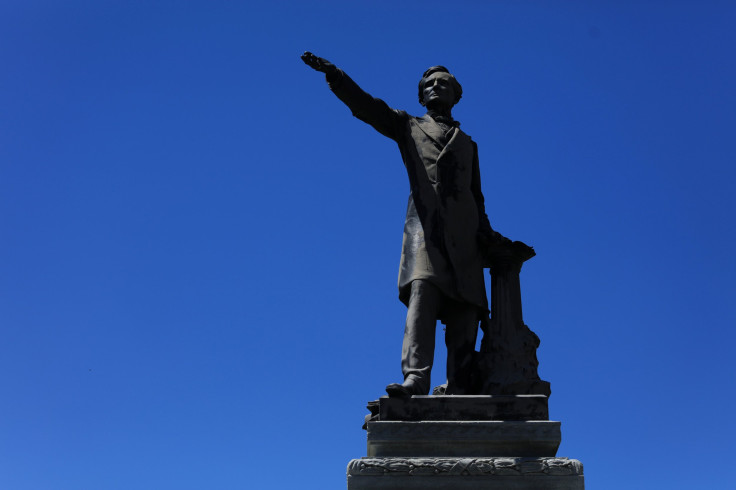Confederate Monuments Removed: Protesters Clash Over New Orleans Statues

The imminent removal of three Confederate statues was met with protests Sunday in New Orleans. More than 700 people were present at the demonstrations, some of whom believed the monuments stood for white supremacy while others argued that they merely represented the storied history of the south.
The plan to remove four Confederate statues (one was removed in April) was announced by Mayor Mitch Landrieu in 2015 and met with scorn from some and support from others. Supporters championed the idea as a way to rid New Orleans of what they believed were clear symbols of racism.
“In the name of the good people of New Orleans, in honor of our civil rights veterans who fought for decades for their removal, in appreciation of the Black community, elders and youth Take Em Down NOLA is issuing this call for everyone to come out!” the anti-monument group Take Em Down NOLA wrote in a call for protesters on its website.
Others, however, said removing the statues would amount to desecrating an integral part of the state’s history. One New Orleans native took out a two-page advertisement in local newspaper the Advocate directed at Landrieu that began, “Dear Mitch – Shame On You!”
New Orleans Klansmen protesting the removal of Confederate monuments. Can't describe it. Just watch. pic.twitter.com/BBGkkBXfGo
— Benjamin Dixon (@BenjaminPDixon) May 8, 2017
“I ask you, Mitch, should the Pyramids in Egypt be destroyed since they were built entirely from slave labor?” Frank Stewart, 81, wrote in the ad.
Hundreds gathered in Lee Square Sunday to demonstrate. Opposing chants could be heard as people from both sides of the argument clashed.
“Go home racists,” and “Hey, hey, ho, ho white supremacy’s got to go,” were chanted by supporters of the monuments' removal, according to the Times-Picayune.
Those who were tasked with the statues’ removal were met with threats. The city needed cranes to remove the massive monuments and every crane company in the area had been threatened, Landrieu told the Times-Picayune. Workers who removed the first statue in April had to wear flak jackets and other items that hid their identities, the New York Times reported.
The impending removal of four statues was originally announced in December 2015 by the mayor, shortly after white supremacist Dylann Roof opened fire on a black church in Charleston, South Carolina, killing nine. Landrieu signed an ordinance calling for the statues' removal six months later.
“The removal of these statues sends a clear and unequivocal message to the people of New Orleans and the nation: New Orleans celebrates our diversity, inclusion and tolerance,” Landrieu said in a statement in April.
The city removed the first of the four statues in April, an obelisk honoring an 1874 uprising by white residents who rejected reconstruction. The other three remained standing as of Monday, and included statues of Robert E. Lee, Jefferson Davis and P. G. T. Beauregard. It was unclear exactly when the monuments were set to be removed. The city announced it would move statues to a place where they can be put in “historical context.”
“Relocating these Confederate monuments is not about taking something away from someone else,” said Landrieu. “This is not about politics, blame, or retaliation. This is not a naïve quest to solve all our problems at once. This is about showing the whole world that we as a city and as a people are able to acknowledge, understand, reconcile – and most importantly, choose a better future.”

© Copyright IBTimes 2025. All rights reserved.






















